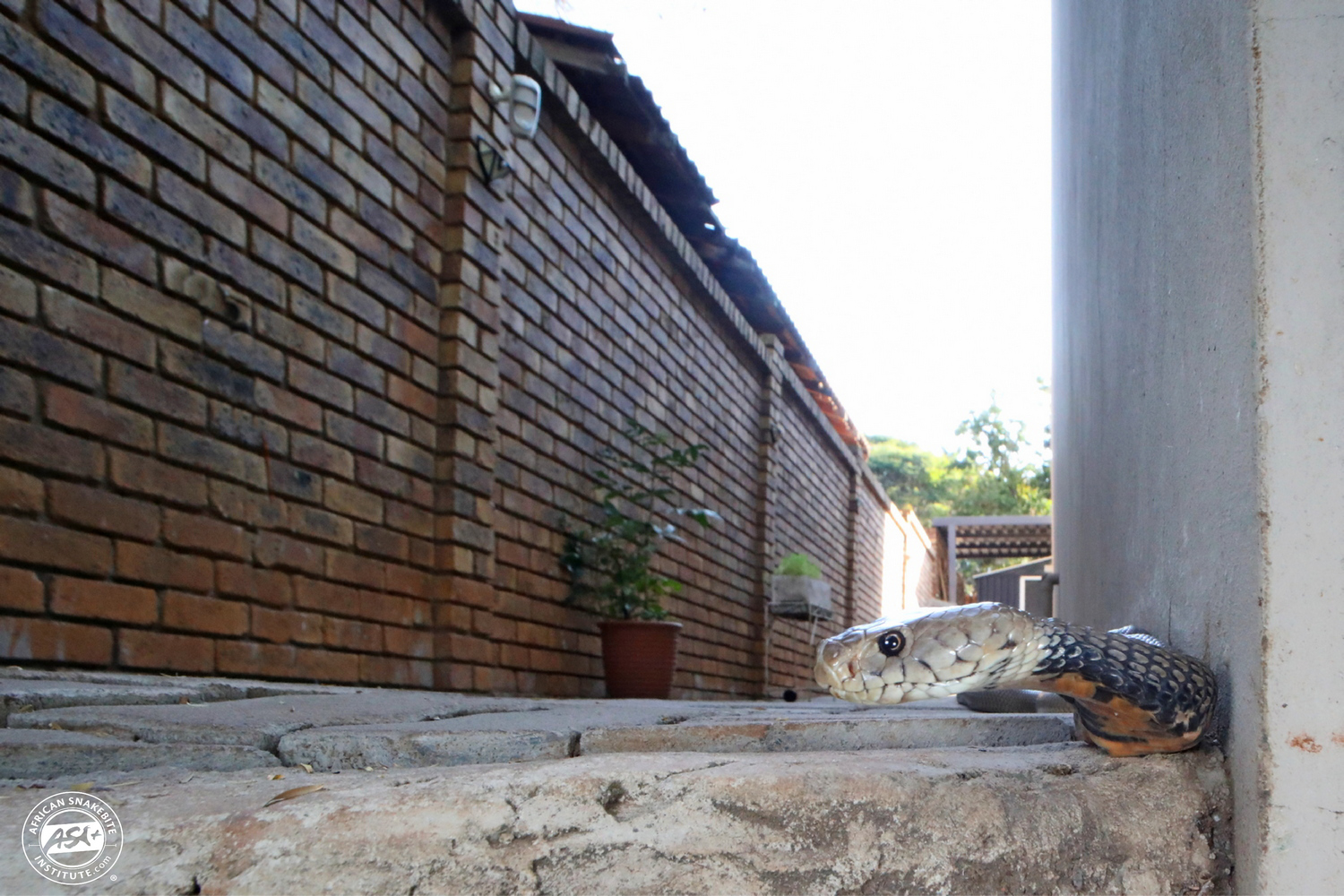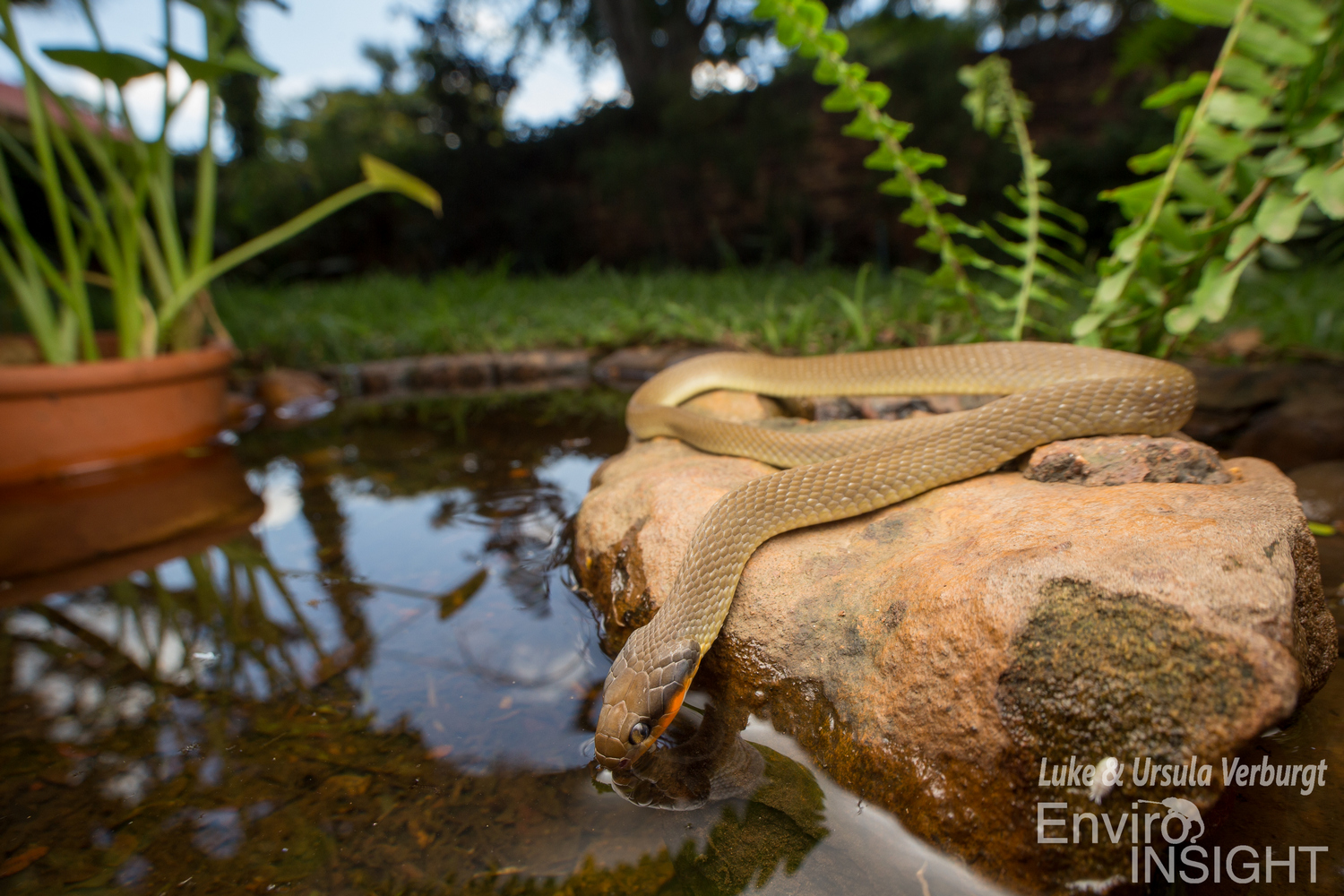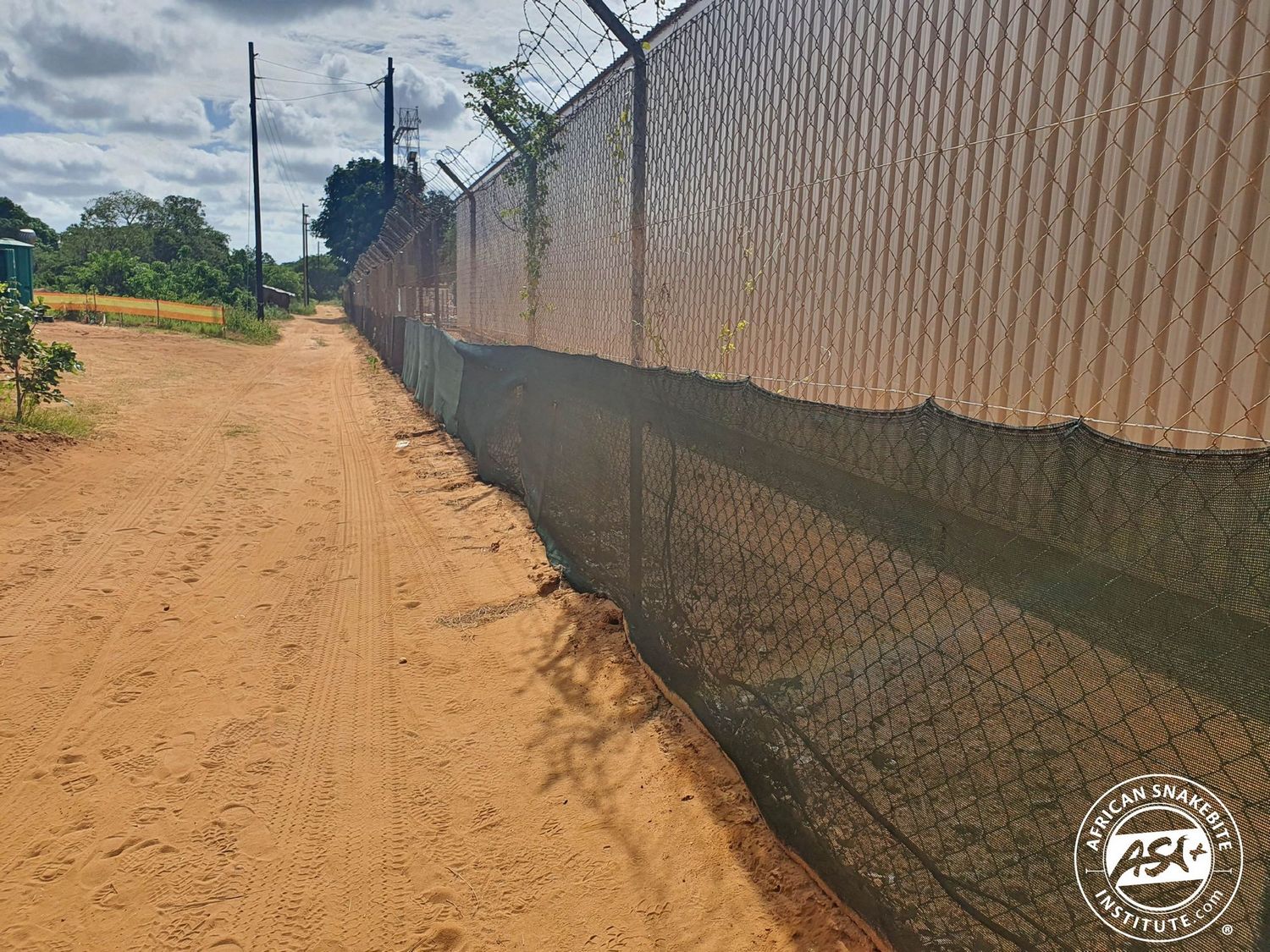|
As the crisp bite of winter is left behind, snakes are starting to warm up and move around. For most of the colder months, snakes will be relatively inactive, usually hiding underground in a burrow or under a large rock or log. These hiding places have limited fluctuation in temperature and protect snakes from sudden cold spells. Lower temperatures reduce the snakes' metabolism, and most snakes eat little or nothing during winter.
Temperature increases at the start of spring and this is a cue for snakes to start moving and feeding. Many species will also start the mating season in spring so that their eggs can hatch in summer. Reproduction requires a lot of energy and snakes will need to put on some weight and condition before mating starts.
This is the time that snakes may end up in gardens or even in houses. There is a large selection of food around houses in the form of frogs, baby birds, rodents, and lizards, including geckos, and this will attract snakes.
|
 |
|
A Mozambique Spitting Cobra entering a yard in search of food. Photo - Luke Kemp.
|
|
|
| |
|
|
|
JOIN THE ONLINE BOOK LAUNCH
of the new
Complete Guide to Snakes of Southern Africa
Date: Wednesday 21 September 18h00
Johan Marias will be in conversation with Quinton Coetzee launching the long-awaited 3rd edition of the Complete Guide to Snakes of Southern Africa / 'n Volledige Gids tot die Slange van Suider-Afrika
Join the launch via Zoom here: https://bit.ly/3eSRTW0
|
|
|
|
Despite popular belief, there is nothing that repels snakes. We are frequently asked about the efficacy of Jeyes Fluid, old diesel, potassium permanganate, garlic, geraniums, lavender, moth balls and the like, but nothing works. The best way to prevent an influx of snakes into residential gardens is to reduce suitable hiding places as well as prey items. Piles of bricks, rocks, firewood or building rubble, including old roofing tiles, are perfect places for snakes to hide. Trees and creepers growing against the building often allow snakes access to open windows where they accidentally enter houses. Bird feeders and chicken coops attract rodents which attract snakes. Ponds and water features attract frogs which attract snakes.
|
 |
|
A Herald Snake drinking from a garden pond. Many snakes are attracted to ponds for frogs and to quench their thirst. Photo - Luke Verburgt.
|
|
|
|
The most effective way of keeping snakes off your property is to seal the property off using shade cloth which has to be fixed to an outer fence to form a visual and physical barrier. It should be at least 1 meter high and must be dug into the ground (about 30 cm deep). Any snake encountering such a barrier will be directed to the left or right along the barrier. The weak spots will be entry gates – try and seal them off well, as snakes can enter through very small holes or gaps.
|
 |
|
Shade cloth used to prevent snakes entering a mine in Mozambique.
|
|
|
|
ASI Mini Snake Tongs
Available in 55cm and 80cm, these tongs are ideal for working with small venomous snakes or removing uneaten food from enclosures.Both the jaw and grip are manufactured from high quality aluminium, as is the anodized aluminium shaft.
Price R485.00 for the 55cm tong
and R495.00 for the 80cm tong.
,
|
|
|
| Order here |
|
|
|
If you are feeling brave, join us for a venomous snake handling course and learn the correct and safe protocols to remove a problem snake. Alternatively, if you do come across a snake in the house or garden, and you are not comfortable removing the snake yourself, you can use the free ASI SNAKES APP (http://bit.ly/snakebiteapp) to find a snake catcher in your area.
Some tips to assist the snake catcher:
1. Clear the area of hazards. Lock up dogs and keep children away.
2. Watch the snake. If you can keep an eye on the snake from a safe distance (5 m or more), it helps the snake remover to easily locate and capture the animal. Calling a remover to catch a snake that was seen the night before or previous week is generally a waste of time, as snakes are quick to disappear and invariably move on.
3. Do not attempt to catch or kill a snake, unless you have been trained in snake removal and have the correct equipment. Getting close to snakes can be dangerous as they are unpredictable and are usually nervous around humans. Getting too close may result in the snake defending itself by either biting or spitting. Leave snake handling to the professionals.
|
|
Children should be warned to immediately retreat at least five paces away from any snake, and call an adult.
Most dogs will attack any snake that they see, and this often results in the dog getting bitten or spat in the eyes. Should a dog get bitten or spat in the eyes, get it to a vet immediately. There are no quick and easy remedies for pets bitten by a snake and milk, charcoal or Allergex tablets do nothing to save the life of a pet.
In the unlikely event of a person being bitten by a snake, the best course of action is to get the victim to the nearest hospital with a trauma center as soon as possible. For more details on first aid for snakebite, please check the first aid section on the free app ASI Snakes.
|
|
|
|
Our 3rd batch of the all new Complete Guide to the Snakes of Southern Africa has just come into stock.
Order your signed copy from us today!
Covering the 176 snake species in southern Africa - this long awaited third edition has been updated, revised and expanded. New information based on scientific research relating to behaviour, identification, reproduction, taxonomy , first aid for snakebite and snake venom has been included in the species accounts. This comprehensive book also covers snake biology and behaviour, key features used for identification and first aid for snakebite.
Price: R450.00 each (with free shipping in South Africa)
|
|
|
| Order here |
|
|
|
|
|
|